Electricity - Class 10th Science
NCERT Exercise Solution
Question: 1. A piece of wire of resistance R is cut into five equal parts. These parts are then connected in parallel. If the equivalent resistance of this combination is R′, then the ratio R/R′ is–
(a) 1/25
(b) 1/5
(c) 5
(d) 25
Answer: (d) 25
Explanation:
Resistance of whole wire = R
Therefore, resistance of each part of the wire = R/5
Since all the pieces of wires are connected in parallel, and the equivalent resistance of this combination = R
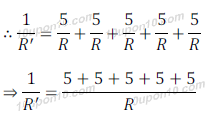
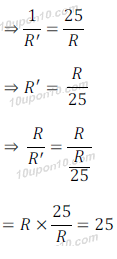
Question:2. Which of the following terms does not represent electrical power in a circuit?
(a) I2R
(b) IR2
(c) VI
(d) V2/R
Answer: (b) IR2
Explanation:
Different forms of expression of power
We know that,
P = VI --------(1)
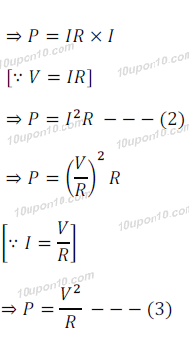
Thus, electric power can be defined by above three forms of expressions, and not by IR2
Thus, (b) IR2 is correct answer
Question: 3. An electric bulb is rated 220 V and 100 W. When it is operated on 110 V, the power consumed will be
(a) 100 W
(b) 75 W
(c) 50 W
(d) 25 W
Answer: (d) 25 W
Explanation:
Given,
V = 220V, P = 100W
At 110V, Power consumption = ?
We know that,
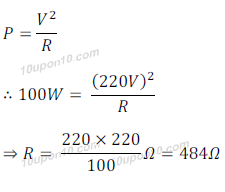
Now, Power consumption at 110V,
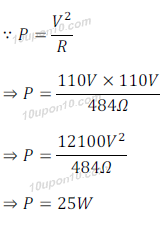
Thus, power consumption at 110V = 25W
And option (d) 25 W is correct answer.
Question: 4. Two conducting wires of the same material and of equal lengths and equal diameters are first connected in series and then parallel in a circuit across the same potential difference. The ratio of heat produced in series and parallel combinations would be
(a) 1:2
(b) 2:1
(c) 1:4
(d) 4:1
Answer: (c) 1 : 4
Solution:
Let, potential difference = V,
Let, resistance of the wire = R
Let resistance of wire in series = R1
Let resistance of wire in parallel = R2
Let heat produced in series = H1
Let heat produced in parallel = H2
Total effective resistance of wires when connected in series, R1 = R + R = 2R
Total effective resistance of wires when connected in parallel,
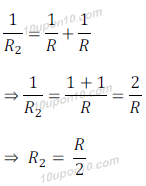
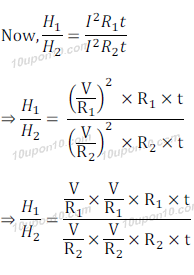
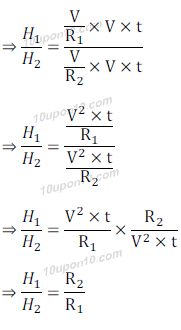
By substituting the value of R2 and R1
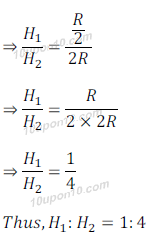
Therefore, option (c) 1 : 4 is the correct answer.
Question: 5. How is a voltmeter connected in the circuit to measure the potential difference between two points?
Answer: Voltmeter is connected into parallel to measure the potential difference between two points in a circuit.
Question: 6. A copper wire has diameter 0.5 mm and resistivity of 1.6 x 10–8 Ω m. What will be the length of this wire to make its resistance 10 Ω? How much does the resistance change if the diameter is doubled?
Answer:
Given,
Resistance, R=10 Ω
Resistivity (ρ)= 1.6 × 10–8 Ω m
Diameter = 0.5mm
Therefore, length =?
And, Resistance =? (When the diameter is doubled.)
Here, diameter of wire = 0.5 mm
Therefore, radius = 0.5mm/2 = 0.25mm = 0.25/1000 m = 0.00025m
Now,
Area of cross section (A) = π r2
Or, A = 3.14 x 0.00025 m x 0.00025 m
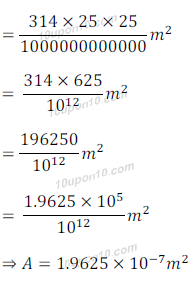
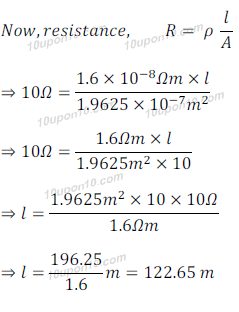
When diameter of wire become double, i.e. equal to 0.5 mm x 2 = 1 mm
Therefore, radius, r = 1mm/2 = 0.5mm = 0.5/1000 m = 0.0005 m
Therefore, Area A = πr2
⇒ A = 3.14 x 0.0005 m x 0.0005 m
⇒ A = 3.14 x 0.00000025 m2
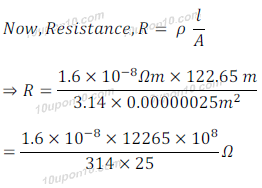
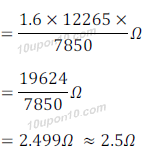
Thus, length of the given wire = 122.65 meter
Resistance of the wire when diameter becomes double = 2.5Ω